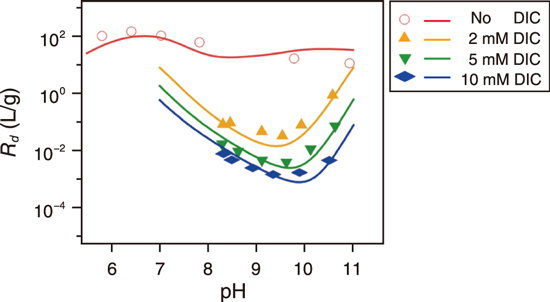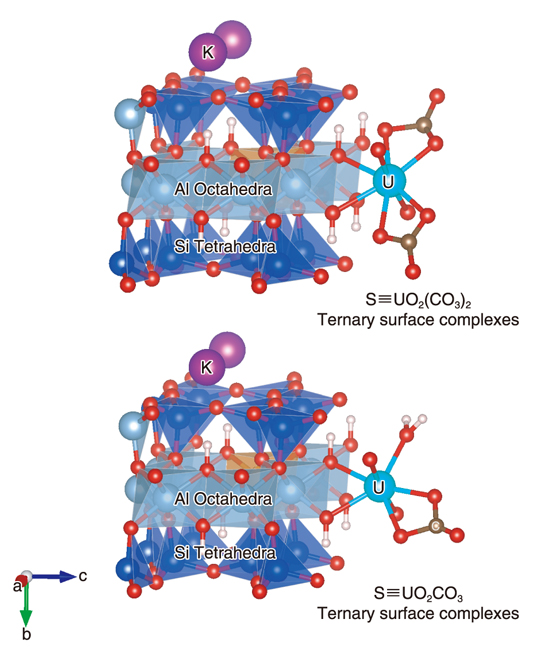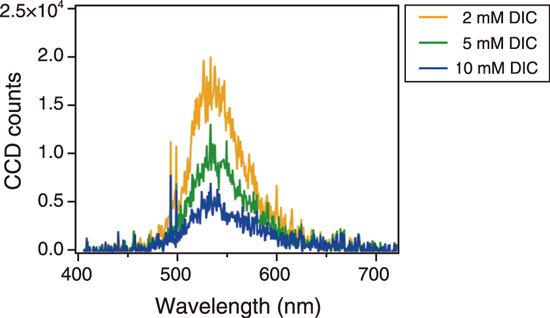
Fig.3-12 Sorption experimental and modeling results

Fig.3-13 Two schemes of sorption of U(VI) on illite surface originating from different complexes

Fig.3-14 Results of cryogenic fluorescence spectroscopy
In the geological disposal of high-level radioactive waste, radioactive wastes produced during nuclear power generation would be vitrified and disposed deep underground. As it will take tens of thousands of years to reduce the radiation level of the disposed waste, it is necessary to assess the safety and reliability of a geological disposal system. In geological disposal, the surrounding rocks, including clay minerals, act as a natural barrier for the sorption and retention of uranium-containing radionuclides. Therefore, it is important to evaluate the sorption process of radionuclides at the interface between clay minerals and groundwater. Groundwater contains a high concentration of dissolved carbonate (DIC) ions, which may affect the sorption of radionuclides to clay minerals via complexation with radionuclides. However, no quantitative evaluation method of this process is available at present, and this problem needs to be solved. In this study, the sorption trend of uranium (VI) (U(VI)) with DIC concentration and the sorption mechanism were investigated.
First, the batch sorption experiments were conducted to study U(VI) sorption on illite by varying the DIC concentration. The results showed that the distribution coefficient (Rd) and sorption capacity of U(VI) decreased as the DIC concentration increased (Fig.3-12). Furthermore, the experimental data were analyzed by using a sorption complexation model, and it was found that two different surface sorption complexes should be considered to explain the sorption data (Fig.3-13).
To differentiate the sorption structures of the two complexes, spectroscopic measurement was conducted by cryogenic time-resolved laser fluorescence spectroscopy. This method is suitable for distinguishing the coordination geometry and binding state of ions and ligands around the U(VI) ions adsorbed on the illite surface. Our previous studies have shown that spectral measurements can distinguish the structures of adsorbed species. In this study, the sample was cooled to 3.3 K to improve the sensitivity of the spectroscopy. The results showed that the shapes of the fluorescence spectra detected with high sensitivity did not change. In addition, U(VI) was found to be sorbed on the illite surface though the sorption was suppressed at high DIC concentrations (Fig.3-14). Furthermore, the broad peaks centered around 535 nm indicates the presence of several sorption complexes. From the analysis of the decay curve of fluorescence, the existence of two species (complexes) was identified.
The quantitative relationship of the sorption of U(VI) on illite and the relevant sorption mechanisms were clarified in this study. This knowledge is expected to be useful for evaluating the sorption of radionuclides on common clay minerals.
This work was supported by METI, under “The project for validating assessment methodology in geological disposal (FY2020)”.
(Huiyang Mei)